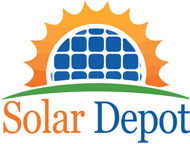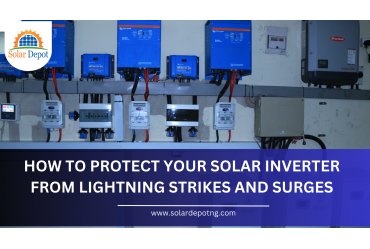How to Protect Your Solar Inverter from Lightning Strikes and Surges
Why Solar Inverter Protection Matters in Nigeria
In Nigeria, lightning strikes and power surges are more than occasional occurrences—they're frequent risks that can severely damage electronic systems, especially solar inverters. Since inverters are the heart of every solar power system, protecting them from surges and lightning is critical to prevent breakdowns, system failures, and costly replacements.
In this guide, we’ll walk you through practical tips and the best protective devices to safeguard your solar inverter and solar panel systems in Nigeria’s unpredictable weather.
What Happens When Lightning or a Power Surge Hits?
A lightning strike, even from kilometers away, can generate a powerful electrical surge through nearby structures and electrical lines. Power surges also occur during grid fluctuations, especially after blackouts or when the power is restored. These spikes can instantly damage sensitive equipment like
- Solar inverters
- Charge controllers
- Batteries
- Household electronics connected to the solar system
1. Install a Surge Protection Device (SPD)
The most important defense against lightning and surges is a surge protection device (SPD).
What is an SPD?
An SPD detects excess voltage and diverts the surge safely to the ground, protecting your inverter and other components.
Where to Install SPD:
AC side: Between the inverter and your home’s distribution board.
DC side: Between the solar panels and inverter.
Internet/Ethernet connections: If your system includes remote monitoring, use data line SPDs.
Recommended SPD Ratings:
For Nigerian homes, use Type 2 SPD rated for:
DC voltage: 600–1000V
- AC voltage: 230/400V






